Types of Pediatric Fractures
Fracture Care at Children’s Mercy
Incomplete fractures
When only one side of the bone is broken and the other either remains intact or bends slightly but does not complete break into two pieces, it is called an incomplete fracture.
Torus, or “buckle” fractures – Torus fractures are the most common fractures in children. They frequently happen around the wrist when children fall and try to catch themselves.
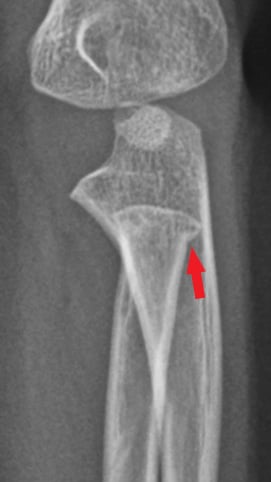
Greenstick fractures – Greenstick fractures get their name from being similar to trying to snap a small tree branch that is still alive. One side of the bone will break but the other will remain connected but can bend. Greenstick fractures are treated with closed reduction or surgery, depending on the angle of the fracture.
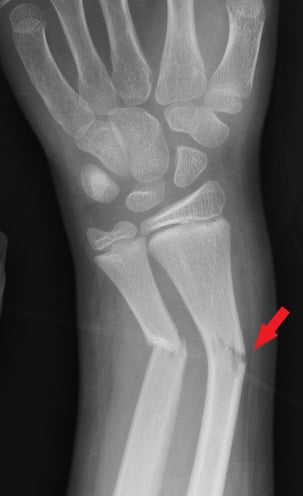
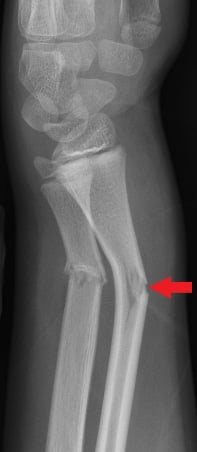
X-rays of the left forearm. Image A shows the front view (anteroposterior); image B shows the side view (lateral). The red arrows show a greenstick fracture of the radius bone (radial shaft). There is also a fracture in the ulna, the other bone in the forearm. A greenstick fracture is when the bone bends or cracks but does not break completely in two.
Plastic, or “bending” deformities – Children’s bones are a bit more flexible than adults’, so they can develop some bowing or curvature to a bone without an obvious fracture line. These are still treated like a fracture to help the bone reset correctly.
Complete fractures
Complete fractures occur when both sides of the bone are broken in two. Complete fractures are inherently less stable and typically require more involved treatment and close monitoring to ensure they heal in the preferred alignment.
Transverse – Transverse fractures occur straight across or perpendicular to the length of the bone.
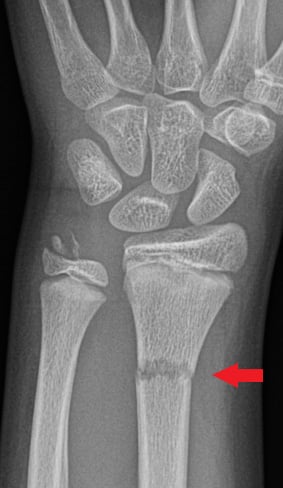
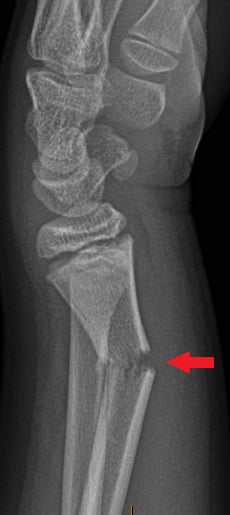
X-rays of the left wrist. Image A shows the front view (anteroposterior); image B shows the side view (lateral). The red arrows shows a transverse fracture of the arm bone near the wrist (distal radius). There is also a fracture in the other arm bone at the wrist (ulna styloid fracture). A transverse fracture is when the bone breaks straight across.
Comminuted – Comminuted fractures cause the bone to break into more than just two pieces.
Oblique – Oblique fractures cause the bone to crack at an angle.
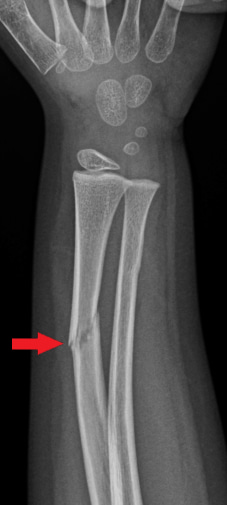
Physeal fractures
Physeal, or growth plate, fractures are unique to children. They commonly occur since the growth plate area is not as strong as the surrounding bone. Much like fractures that don’t involve the growth area, the initial treatment depends on the alignment. However, there is a potential for long-term consequences if the growth plate does not continue to grow normally due to the injury that occurred from the fracture.